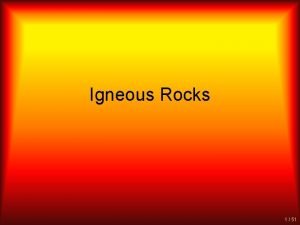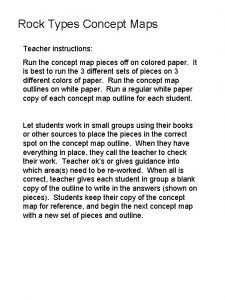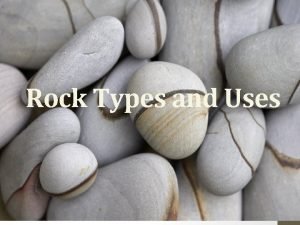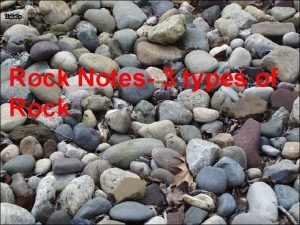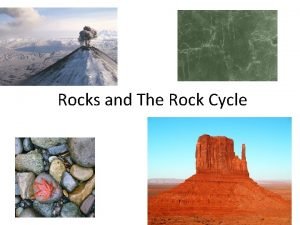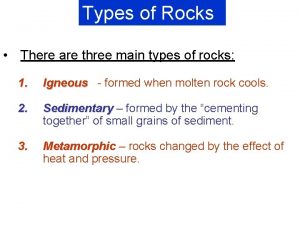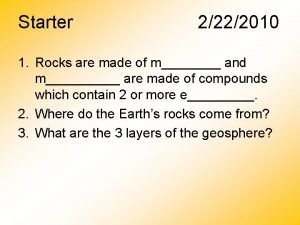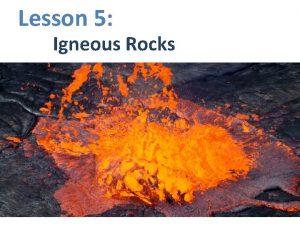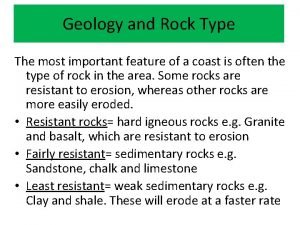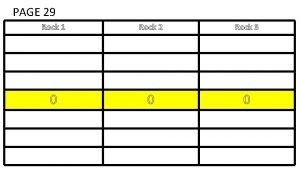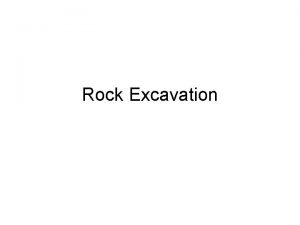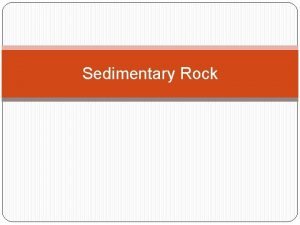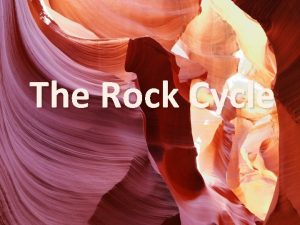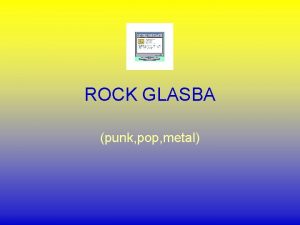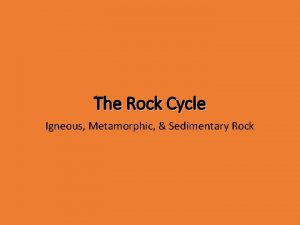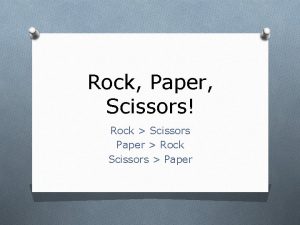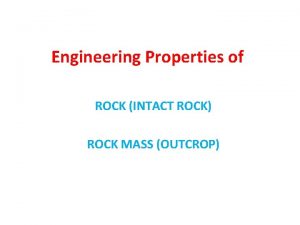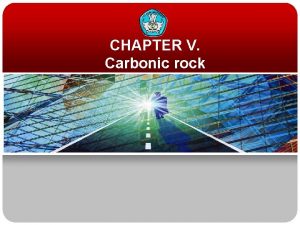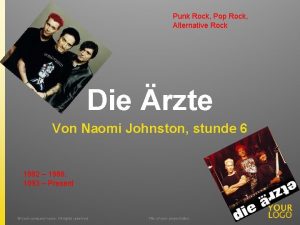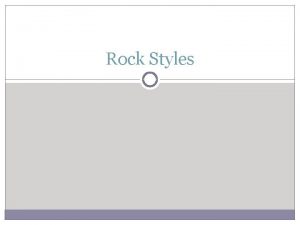Types of Rock What types of rock are



















- Slides: 19

Types of Rock

What types of rock are there?

Rocks • All the rocks you see around you are made up of different minerals • Imagine a rock is a chocolate chip cookie, what does the cookie contain? • Flour, butter, sugar, chocolate chips • A rock contains different ingredients, they are called minerals. There about 3000 minerals in the world.

Types of Rock There are three main types of rocks Igneous Metamorphic y r a t n e m i d Se

Igneous means made from fire or heat. • When volcanoes erupt, liquid rock called lava flows on to the earth's surface. When the lava cools and hardens new igneous rock is made. • When the rock is liquid & inside the earth, it is called magma.


Molten Rock Lava

Granite Diorite

Sedimentary • Rivers carry fragments of broken rock as they flow. • When the river reaches a lake or the sea the rocks settles at the bottom. • We say that the rocks are deposited. • The deposited rocks build up in layers, called sediments. • Eventually all of the water is squeezed out over time and sedimentary rock is formed.

Think of the fragments of rock as pieces of paper, a few sheets of paper wouldn’t make any weight difference, but a big stack of would soon weigh heavily. Eventually the weight of the rocks forms sedimentary rocks (over millions of years).

Sandstone Shale

• Limestone is a type of sedimentary rock • The Egyptian pyramids were made using limestone.

Metamorphic • Metamorphic rocks are ones that have changed. • ‘Meta’ and ‘morph’ both mean change in Greek • All metamorphic rocks would once have been igneous or sedimentary. • What do you think made them change?

Squeeze your hands together as tightly as you can. What do you notice? Your hands will start to get warm and you will feel pressure. This is a bit like the Earth’s crust pressing its rocks. The heat and pressure changes them into a different type of rock.

Limestone metamorphoses into marble

Slate is another metamorphic rock, formed from shale. It is used to roof houses because it forms in thin layers.

Class 4 Home Learning Tasks • Complete the quiz on Rocks and Fossils. Number your paper 1 -13 and answer A, B or C for each. The answers are revealed before you move to the next slide! Why not quiz a family member too! • Can you find an example of Igneous, Sedimentary and Metamorphic rock in your house or garden? Take a photo or draw a picture of what you’ve found! Use the next slide to help you.

How will I recognise the type of rock? You may not find examples of all three types, but have a look anyway! Igneous rocks are very dense and hard. They may have a glassy appearance. They often contain crystals. Examples are granite and pumice. Sedimentary rocks may contain fossils, have wavy horizontal lines, layers, grains you can see or be dusty. . Examples – chalk, sandstone, shale. Metamorphic rocks also contain crystals but these are in rings or bands. Examples are marble and slate.

A good website, showing rocks close up and their different uses: https: //www. earthscienceeducation. com/virtu al_rock_kit/index. htm
 Antigentest åre
Antigentest åre Sedimentary rock song
Sedimentary rock song Rock cycle sedimentary
Rock cycle sedimentary Igneous rock to metamorphic rock
Igneous rock to metamorphic rock Extreme sports bungee jumping
Extreme sports bungee jumping Chapter 3 standardized test practice answers
Chapter 3 standardized test practice answers Chapter 3 standardized test practice answers
Chapter 3 standardized test practice answers Cycle rock
Cycle rock Activity 4 concept map igneous rock
Activity 4 concept map igneous rock Elements look like
Elements look like Types of rock concept map
Types of rock concept map Igneous rocks
Igneous rocks What are the 3 types of rocks
What are the 3 types of rocks Marble and slate
Marble and slate Rock types and cycle quick check
Rock types and cycle quick check Three main types
Three main types Igneous rock types
Igneous rock types Molten rocks underneath
Molten rocks underneath Concordant geology definition
Concordant geology definition Kumon white rock
Kumon white rock









